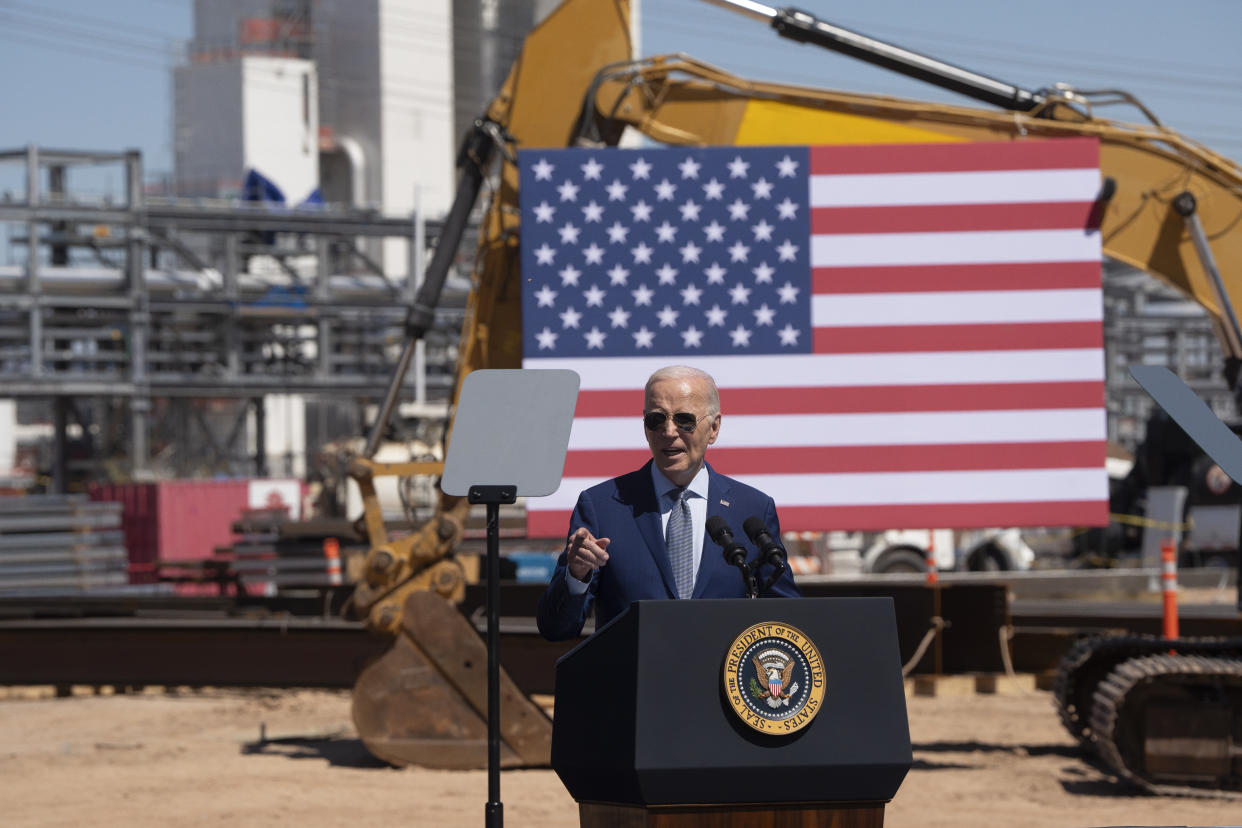CHIPS Act money is starting to move, but it’ll take years to see results
It’s been nearly two years since President Biden signed the $52.7 billion CHIPS Act with the goal of dramatically expanding the US’s semiconductor manufacturing capabilities. Now some of the $39 billion earmarked for manufacturing incentives is actually being dispersed among the world’s leading chipmakers.
On Monday, the Biden administration announced it will award Samsung $6.4 billion to build out its capacity to produce chips meant for everything from consumer products to the automotive industry.
CHIPS Act funding will go toward projects companies have already begun before the money started flowing. But it will still take years for some of the semiconductors built at facilities constructed using CHIPS Act money to reach the market.
“We're talking 2027, 2028 before you and I are using the chips built in America, in a lot of cases,” explained TECHnalysis CEO Bob O’Donnell. “But that's just it. You’ve got to start somewhere.”

CHIPS in America
Building a chip fabrication facility, or fab, isn’t exactly the same as putting up a new 7-Eleven. To start, the shell of the fab, the overarching structure, can take up to two years to build, explained Gaurav Gupta, a vice president analyst with Gartner’s emerging trends and technologies team. Fabs are enormous structures that need to be built to exact specifications, making construction a long process, with a full facility costing billions.
"Then you have to install the equipment, you have to qualify the equipment, you have to run some test wafers. That takes about six to nine months, especially with all these leading-edge nodes, which involve UV equipment, because that equipment by itself takes months and months to get installed and qualified on the site itself," Gupta said.
Building the fab and installing the equipment aren’t the only things that take time. Even after the facility is ready to pump out chips, it can take two to three months to complete a batch of semiconductors from start to finish.
And what about the more advanced chips that the US is angling to get companies to build and that power everything from smartphones to today’s supercomputers? They can take upward of four months to finish.
Those delays came into stark relief during the onset of the pandemic when tech and auto companies saw a dramatic increase in demand for cars and consumer technology devices. But lockdowns and the amount of time it takes to fabricate and ship semiconductors slowed production of everything from vehicles to laptops, smartphones, and more.
US manufacturers couldn’t keep up because they only produce 12% of the world’s semiconductors. The vast majority of chips are built in Asia, with Taiwan accounting for 60% of chips and 90% of the most advanced chips, which power everything from our latest smartphones to AI supercomputers.
The CHIPS Act is meant to bring some of that disparity into balance, with Commerce Secretary Gina Raimondo saying the US would produce 20% of the world’s most advanced chips by 2030.
Plants and problems
So far, the CHIPS Act has awarded funding to Intel (INTC), TSMC (TSM), GlobalFoundries (GFS), Microchip Technology (MCHP), and BAE Systems (BAESY). Micron (MU) is expected to receive funding next week.
Those billions are going to the construction of fabs as well as research facilities. But there will undoubtedly be slowdowns. TSMC and Intel have already announced delays to some of their projects due to market conditions and a shortage of specialized workers.
The semiconductor market is, generally, incredibly fickle. Companies aren’t able to slowly ramp up or reduce chip production, which is why there’s often a glut or dearth of chips. And when the market inevitably dips, there are certain to be questions about why companies are building massive fabs.
“The concern is we hit some sort of financial slowdown, and all of a sudden we have a glut of chips because the nature of chip supply … it goes in fits and starts,” O’Donnell explained.
But pouring cold water on the US chip industry’s buildout at the first sign of a slowdown in chip sales would just reinforce America’s dependence on foreign-built chips, O’Donnell said.
“Is the timing going to be perfect? Probably not,” O’Donnell said. “But is it the right thing to do strategically and for the long term? Absolutely. I think there should be zero question that it's the right thing to do.”
Email Daniel Howley at dhowley@yahoofinance.com. Follow him on Twitter at @DanielHowley.
Click here for the latest technology news that will impact the stock market.
Read the latest financial and business news from Yahoo Finance

